Overgrown Garden Ideas: Easy Tips for a Stunning Transformation
Gardening can be a relaxing and enjoyable hobby, but sometimes life gets in the way and your garden becomes overgrown. Looking at a tangle of weeds, bushes, and grass can feel overwhelming. You might wonder where to start or if you can ever reclaim your outdoor space.

Transforming an overgrown garden is easier than you think with the right approach and a bit of effort. Not only will you create a beautiful space to enjoy, but you’ll also feel a sense of accomplishment as you see the progress you’ve made. Whether you have a small backyard or a large plot, there are plenty of ideas to help you get started.
1) Plant Native Wildflowers

Planting native wildflowers can transform your overgrown garden into a beautiful and lively space.
Choose flowers like tickseed, black-eyed Susan, and butterfly weed. These blooms will bring color and charm to your garden.
Plus, native wildflowers attract beneficial pollinators, making your garden thrive. Look for sunny spots with good air circulation to plant your natives.
For more tips, you can check out resources on creating a native wildflower field or explore wildflower garden ideas.
2) Install Rustic Pathways

Rustic pathways add charm to overgrown gardens. They can guide you through the wild beauty without disturbing it.
You can use materials like cobblestone or wood chips. These options are both natural and affordable. Cobblestone paths look quaint and blend well with lush greenery.
For a simpler approach, consider wood chips. They are easy to spread and give your garden a natural feel.
3) Add Birdhouses
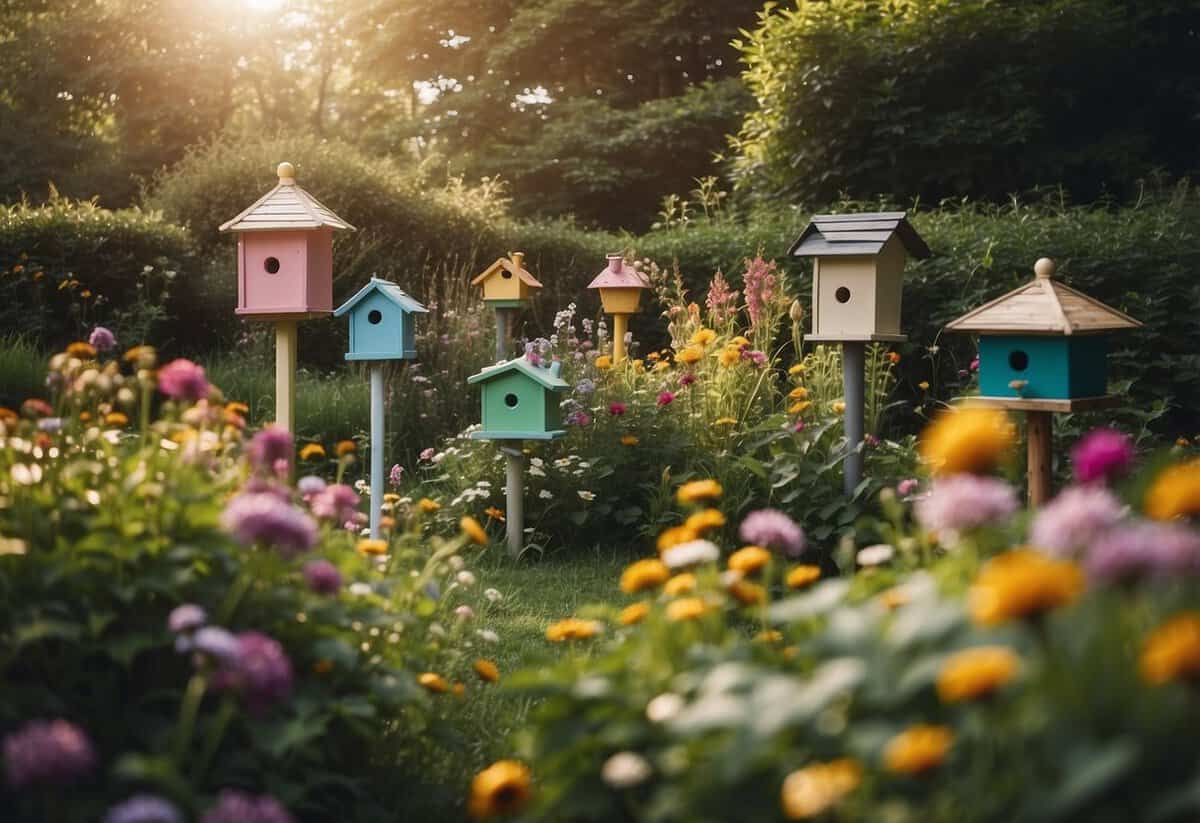
Adding birdhouses to your garden is a fantastic way to invite feathered friends into your space. Birdhouses provide shelter for birds and enhance your garden’s aesthetic.
You can find creative ways to incorporate birdhouses. For example, attach them to a trellis and let climbing plants grow around them for a beautiful, integrated look. Check out more ideas on this website.
You can also use materials like gourds to create unique birdhouses. Gourds are naturally round and hollow, making them ideal as bird shelters. For more inspiration, take a look here.
4) Create a Wildlife Pond

A wildlife pond can transform your garden into a nature haven. Start by choosing a large container or digging a hole in the ground. Aim for a depth of around 45-60cm in the center and 30cm at the edges. Line it with pond liner and fill with water.
Add a variety of plants to your pond to reduce algae and provide shelter for wildlife. Consider waterlilies, submerged oxygenators, floating plants, and marginal plants. These not only support pond health but also attract creatures like frogs and dragonflies. For more detailed guidance, check out how to create a wildlife pond.
5) Construct Stone Edging
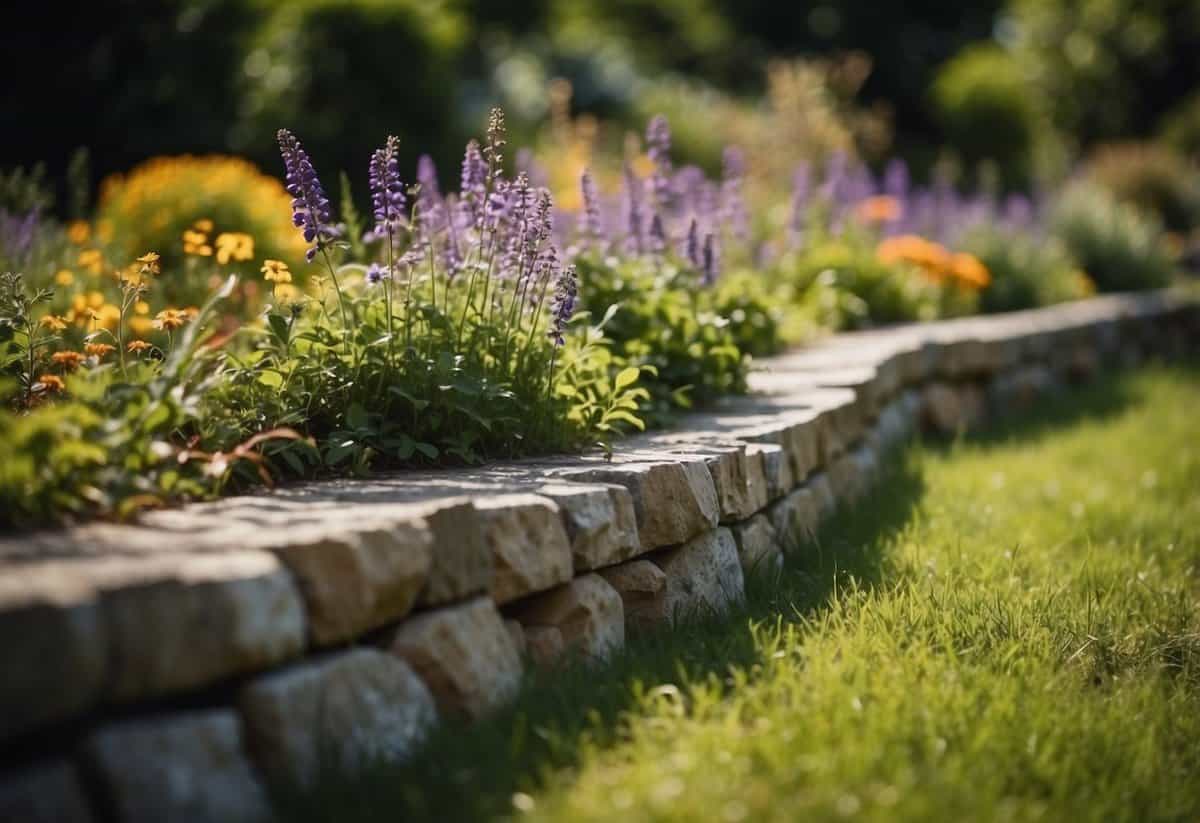
Stone edging can give your overgrown garden a neat and tidy look. By placing stones along the garden’s edge, you create a natural border that keeps soil, mulch, and plants in place. Small stones are perfect for a subtle touch, while larger stones stand out more.
Cedar lumber is a great option due to its durability and resistance to decay and insects. This way, you ensure a long-lasting and low-maintenance garden solution. When you lay down the stones, you clearly define the areas of your garden, which makes it easier to maintain.
6) Plant Creeping Vines
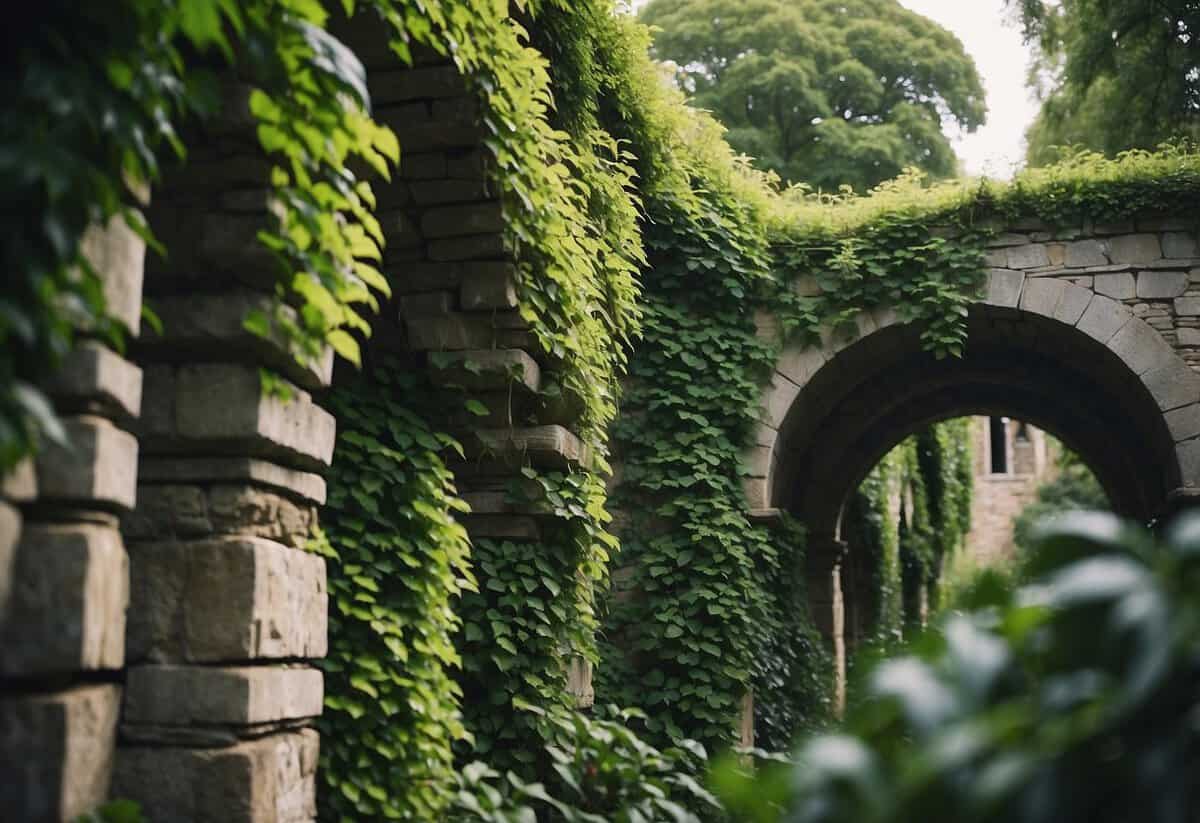
Creeping vines can transform an overgrown garden into a lush, green paradise. They are perfect for covering fences, trellises, and arbors.
Bougainvillea is a great choice, thriving in full sun and well-drained soil. It blooms beautifully in vibrant colors like fuchsia and gold.
Carolina Jessamine, with its fragrant yellow flowers, can grow up to 20 feet in full sun to partial shade. It adds a splash of color during late winter and early spring.
7) Design a Secret Hideaway

Creating a secret hideaway in your overgrown garden adds a touch of magic. Start by choosing a secluded spot. Use tall plants like dahlias to add height and create a cozy, hidden feel.
Add comfortable seating, like a shady bench or swings. Surround the area with fragrant plants, such as lavender or mint, to make it inviting. Enhance the space with an outdoor rug to define and decorate it.
Install an entryway with an arbor or a gate to make your hideaway feel special. This simple touch transforms your garden into a private retreat.
8) Incorporate Garden Art
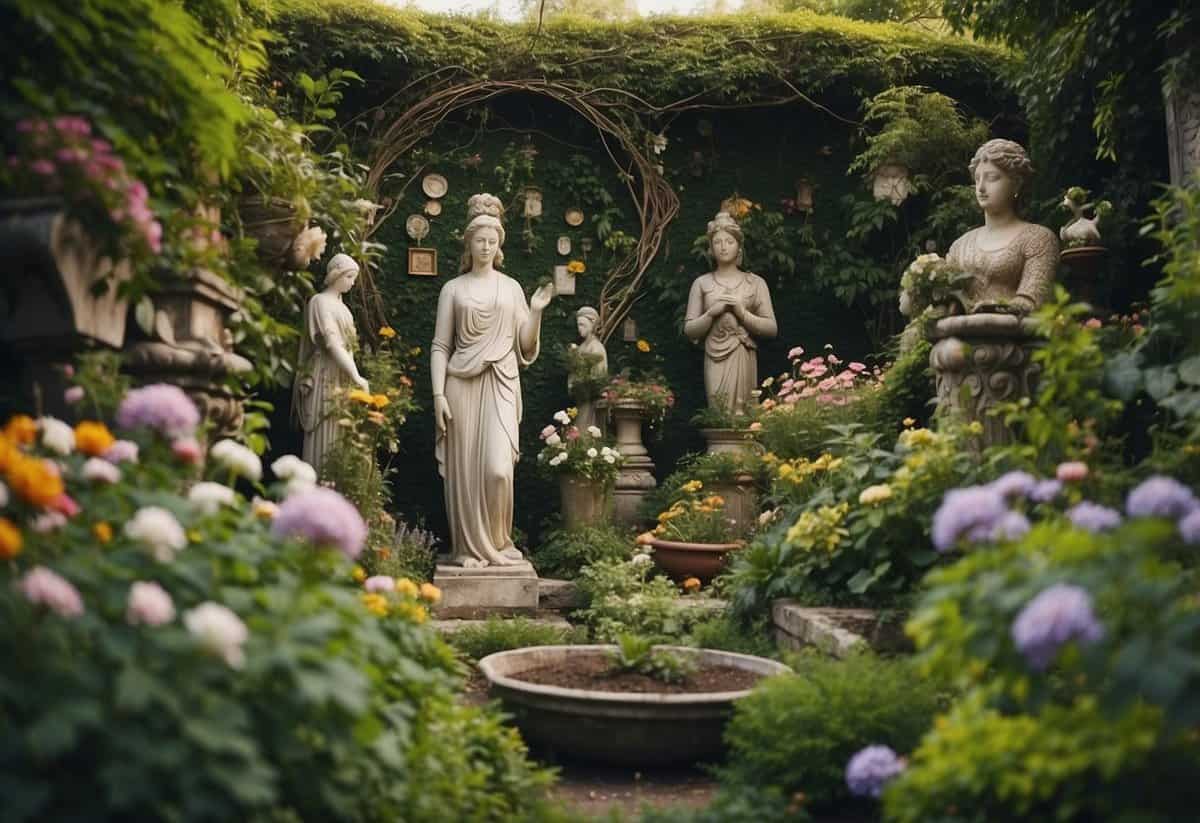
Adding garden art can transform your overgrown garden into a unique and inviting space. Custom engraved stones can add a personal touch to your garden. They can commemorate events, celebrate loved ones, or simply add beauty to your outdoor area.
Try using upcycled flea market finds like an old iron gate as a centerpiece. This not only recycles materials but also adds a whimsical charm to the garden.
Adding vertical elements like trellises or wall-mounted planters gives more dimension. These features can break up the overgrown look and add visual interest.
9) Grow Vegetables in Raised Beds

Raised beds are great for growing vegetables in your garden. They offer better drainage and less soil compaction.
Try planting crops like tomatoes, lettuce, and carrots. These vegetables thrive in the loose soil found in raised beds.
Using raised beds can also help keep pests away from your plants. The elevated structure makes it hard for insects to reach your vegetables.
For more ideas on what to plant, check out this guide for the best vegetables to grow in raised beds.
10) Setup a Compost Area
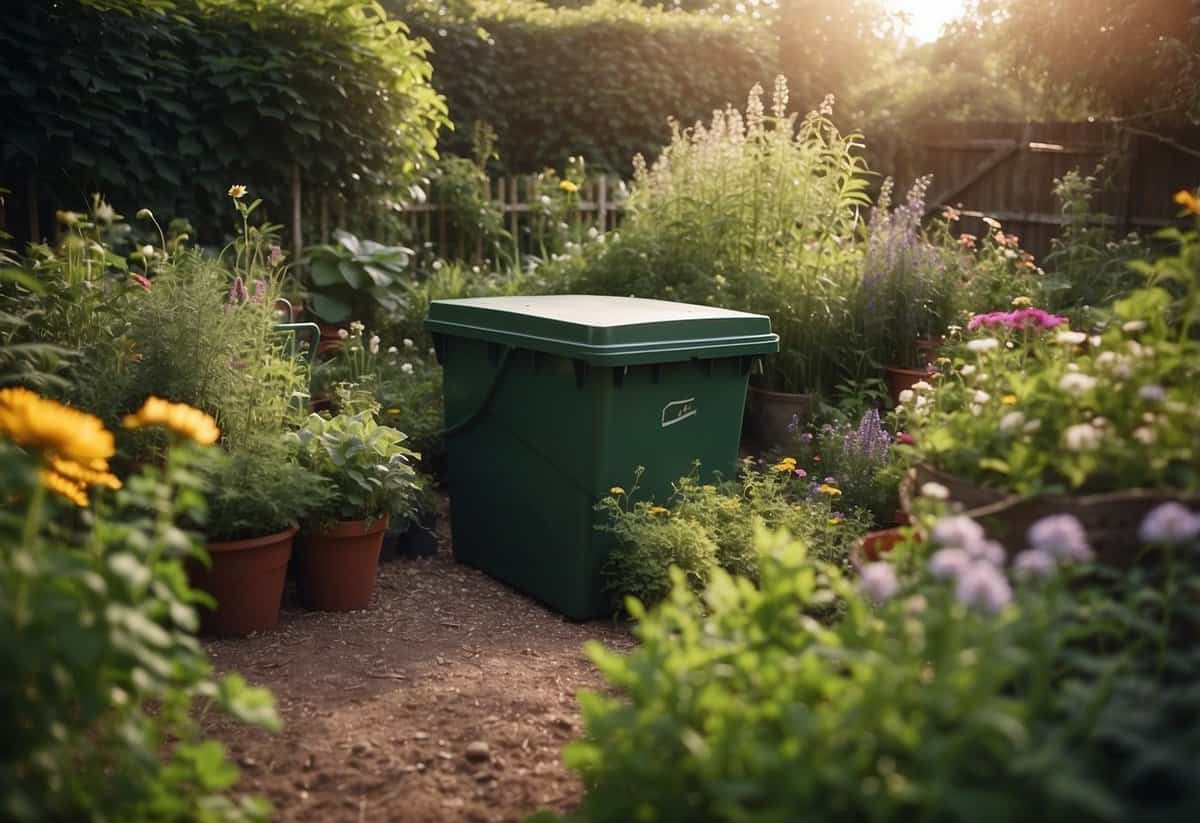
Setting up a compost area is a great way to manage garden waste.
Using a compost bin, you can turn kitchen scraps and yard waste into nutrient-rich soil. A simple backyard compost system can start with a 6-inch layer of “brown” matter and a 2- to 3-inch layer of “green” matter.
Choose a spot that gets some sun and has good drainage. Fill it with leaves, grass clippings, and kitchen scraps. Turn the pile regularly to speed up the composting process.
Understanding Overgrown Gardens

Overgrown gardens often result from neglect, leading to thick weeds and unruly plants. This can cause health issues for your garden, such as poor plant growth and disease.
Common Causes of Overgrowth
One common cause of overgrowth is a lack of regular maintenance. When you don’t prune plants or clean up fallen leaves, the garden can quickly become chaotic. Missing a few weeding sessions can let weeds take over, choking out desired plants.
Another factor is planting without a long-term plan. Fast-growing plants may overshadow slower ones, creating an imbalance. Sometimes, plants spread beyond their intended area, leading to a mess.
In some cases, life gets in the way. Busy schedules or unexpected events can make it hard to care for your garden, resulting in neglect.
Impact on Garden Health
An overgrown garden can harm plant health. Overcrowding reduces air circulation, increasing the risk of plant diseases. Thick vegetation can create a damp environment, perfect for mold and mildew to thrive.
Weeds compete for nutrients, water, and sunlight. This weakens your desired plants, making them more susceptible to pests. Overgrown areas can also harbor pests, providing them with hiding spots and food sources.
Poor visibility and accessibility make it harder to spot issues early. This means problems like pests, diseases, or nutrient deficiencies might go unnoticed until they become severe. Proper management is key to maintaining a healthy, vibrant garden.
Step-by-Step Guide to Reclaim Your Overgrown Garden

In this section, you’ll learn how to assess your garden’s current state, use effective clearing and pruning techniques, and rehabilitate your soil to restore its health and fertility.
Initial Assessment
Start by evaluating your garden. Identify which plants are worth saving and which ones need removing. Take note of any invasive species that have taken root.
Make a list of the tools you’ll need, such as pruning shears, gloves, and garbage bags. Assess the current condition of your garden paths, fences, and other structures. Checking for any repairs needed can help you plan better. Determine whether you can do the work yourself or need professional help, especially for larger, more complex tasks.
Clearing and Pruning Techniques
Start clearing by removing large debris, like fallen branches or leaves. Clear out any rubbish and dead plants. Mow the lawn to a manageable height. For overgrown bushes and trees, trim them back methodically. Remove only one-third of the plant material to avoid shocking the plant.
Prune the plants you want to keep, cutting away any dead or diseased branches. Use proper pruning techniques to maintain plant health. Compost the plant material to create mulch for later use. For weeds, pull them out by the roots to prevent regrowth. Lay organic mulch to suppress weed growth and keep soil moist.
Soil Rehabilitation
Testing your soil is key. Check its pH levels and nutrient content. You can use a home testing kit for this. Based on the results, amend the soil with organic matter such as compost or manure to improve fertility.
Turn over the soil to aerate it, which helps roots grow better. Remove large rocks or debris that can hinder plant growth. Mulch your garden bed to retain moisture and regulate temperature. Regularly monitor soil moisture and adjust watering habits to meet your garden’s needs.
For best results, keep adjusting your approach as you learn what works best for your specific garden conditions. This process takes time and patience, so stick with it to enjoy a revived, beautiful garden.
Design Ideas for a Revived Garden

Reviving an overgrown garden can be a fulfilling project. You can create beautiful focal points and use native plants to add charm and sustainability to your space.
Creating Focal Points
Focal points draw attention and give structure to your garden. Start with elements like a rustic stone bench, a bird bath, or a vintage garden sculpture. These items serve as eye-catching features that make the garden feel organized and inviting.
Consider a water feature, such as a small pond or a fountain. The sound of running water adds a peaceful atmosphere. Surround the water feature with lush greenery to enhance its appeal.
Use paths and walkways made of gravel, stone, or pavers. They guide visitors through your garden and connect different zones. Add solar lights along the paths for a magical touch in the evening.
Tall plants, like sunflowers or hollyhocks, can create natural focal points. Place them strategically at the back of flower beds or near the entrance to your garden to draw the eye.
Incorporating Native Plants
Native plants are adapted to local conditions and require less maintenance. They attract local wildlife, such as birds and butterflies, promoting biodiversity. Research which plants are native to your area and thrive in your specific soil and climate.
For a striking visual, mix plants with different bloom times. This ensures that your garden has color throughout the year. For instance, in a garden in California, you can use California poppies, ceanothus, and manzanita.
Plant native grasses to add texture and movement. They are typically hardy and can withstand local weather variations well. Grasses like little bluestem or prairie dropseed are good choices.
Incorporate native flowering shrubs like elderberry or wild hydrangea. These shrubs provide structure and seasonal interest. Use them to create borders or as background plants.
Native plants often need less water and fewer pesticides, making them an eco-friendly choice. This makes your garden more sustainable and easier to care for.







